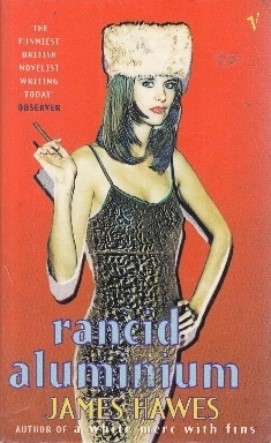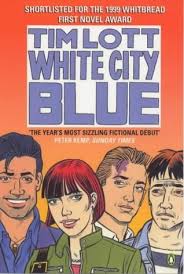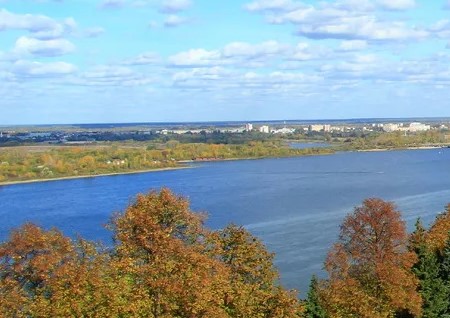
James Hawes’ second novel screams 1990s Brit-lit in the same way that Blur and Oasis riff us back to the Britpop era whenever their guitar twangs ring out from an unsuspecting radio.
Recently cool and successful bloke suddenly realises that leaving his 20s behind means thinking about hard decisions like committed relationships, having children, making a living, and —let’s be honest— just growing up.
But he can’t quite hack it. From the cliché of seeing himself in the mirror and wondering who the old fat guy is, through getting drunk, or having a fight in a traffic jam, to the chapter-on-chapter emotionally and anatomically detailed dilemma of cheating on his partner and trying but failing to convince himself that it doesn’t matter.
It is the way that it’s written, as much as the subject matter, which identifies Rancid Aluminium as of its genre and time. It is ‘lad lit’, as opposed to ‘chick lit’. Written in the first-person, Rancid Aluminium is part-laddish introspection, all sweary/sweaty boys’ talk; and part-existential, what’s-it-all-about, internal monologue with ‘the Big Ref’ in the sky of life. Exhibit One in regard to these two strands is Chapter Three’s four-word title, ‘The Morality of Wanking’.
The style is the literary equivalent of a 1990s pop video; swift scene cuts, vivid and in-your-face settings, and play-fight violence. The modes of prose jump about like multiple strobe-light flashes; italics, uppercase, sections written as if in a play, flashbacks, conversations with life’s imaginary interview panel.

I’m always on the lookout for literary comparisons, and in terms of broad theme and style, this put me in mind of Tim Lott’s White City Blue (1999), published a couple of years later than Rancid Aluminium.
It’s a long time since I read the latter, so I hope that I am not mis-remembering. But a quick online check suggests that I am not.
Though of course a major difference between Rancid Aluminium and White City Blue —and the reason why the former is reviewed here and the latter not— is that Rancid Aluminium has a strong Russian element. Parts of it are even set in Russia.
In order to seal the unlikely deal that will save his business (see part one of this review), the novel’s hero, Peter Thompson, has to travel to Russia. More specifically, he flies into Moscow and then moves on to southern Russia.
Peter’s arrival at Sheremetevo airport is particularly well done, and instantly recognisable to anyone who visited Russia through that entrance point in the 1990s.
It looked like the main concourse of a hideous sixties British Rail station that had been taken over by very expensive art-design teams and turned into the set for Mad Max IV … And it was not the first world, maybe not even second world: this was so close to the third world you could smell it.
The first clue was the double file of shouting, grabbing taxi-drivers besieging us as we filed out. The next was the shade-toting police leaning and lounging on their blue-and-white Ladas, amidst the klaxoning hordes of other Ladas. But the big giveaway was the army.
The army consisted of men in various combinations of half-uniforms, many of them including blue-and-white striped T-shirts. Some wore para-like berets, some had navy-style caps with little ribbons hanging down, others sported baseball caps … They were all either in the middle of a cigarette, or just lighting up, or just stubbing out …
— Taxi taxi sir! cried a leather-blousoned and dentally challenged thug, proudly indicating a hideously rusting brown Lada and grabbing hold of my bag. I held onto it.
— No. Um, nyet, no taxi, no!
— Yes taxi no bus no train only taxi.
rancid aluminium, pp. 183-184
As well as the common Russia-in-fiction description of a journey from Sheremetevo into central Moscow, including the seemingly obligatory reference to the ‘tank-traps that mark where the Panzers got to in December 1941’ (p. 185), Rancid Aluminium has some less common and equally well-drawn scenes that take place in Russia.
The prologue is set in the remote settlement of Otradny, in Samara oblast; one of those single-industry towns (or monogoroda) that were built in the industrialisation process of the mid-Soviet era and then struggled to survive the collapse of the all-supportive Soviet state in the 1990s.
As the novel wends its way to a conclusion the central characters reconvene in Samara, on the banks of the Volga.

Talking of the end of the novel, I have to confess I jump-read to get there. And when I did, I found it —as per expectations— to be unsatisfactory plot-wise. To overgeneralise, unresolved is the default setting for the contemporary British literary novel. And when it comes to the characters of Rancid Aluminium, they lack the emotional depth and complexity for me to care much about what happens.
But as ciphers to carry an interesting set of proposals and conjectures about morality and modern life, set against the stripped-back ‘capitalism’ of 1990s Russia, they and the novel in which they feature perform the task adroitly.
Rancid Aluminium’s portrayal of Russia is replete with straightforward and recognisable characterisations, albeit well done. There are parallels here with Piers Paul Read’s A Patriot in Berlin (1995) and even with the Booker shortlisted Snowdrops (2011) by A. D. Miller. The coalition of brutal venality with Western financial elites, and the accompanying opportunity to consider their morals and values, their similarities and differences, has obvious appeal to writers of literary fiction.